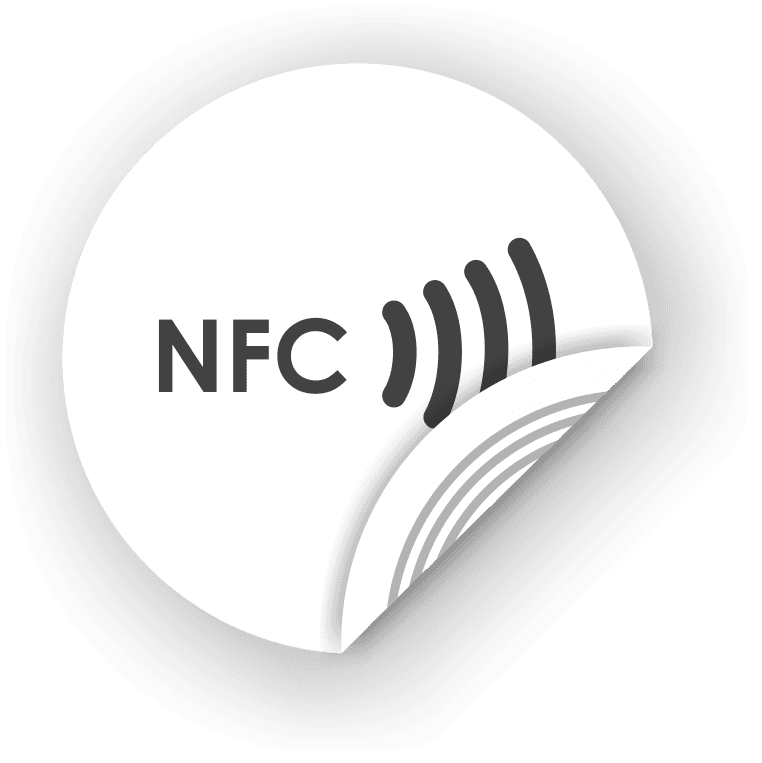Near Field Communication (NFC) technology has revolutionised the way we connect and share information. It enables seamless communication between devices by simply bringing them close together. While NFC is commonly used for mobile payments and contactless transactions, its potential extends far beyond these applications. One area where NFC has made a significant impact is in the world of business cards.
What are NFC business cards?
NFC business cards are a modern take on the traditional paper business card. They are embedded with a small chip that allows them to communicate wirelessly with NFC-enabled devices. When someone taps their NFC-enabled smartphone or tablet on an NFC business card, it automatically triggers a pre-programmed action, such as opening a website, displaying contact information, or initiating a phone call.
These digital business cards offer a more interactive and engaging way to exchange information. They eliminate the need for manual data entry and ensure that your contact details are easily accessible to potential clients or collaborators. NFC business cards are not only practical but also leave a lasting impression on recipients, showcasing your commitment to innovation and technology.
Benefits of using NFC business cards
NFC business cards offer a range of benefits that set them apart from traditional paper business cards. Firstly, they provide a more eco-friendly alternative by reducing the need for printing and paper waste. Additionally, NFC business cards allow for dynamic and customisable content. Unlike paper cards, which have limited space for information, NFC cards can be programmed to showcase a portfolio, link to social media profiles, or even share videos.
Moreover, NFC business cards provide a seamless user experience. The process of exchanging information becomes effortless, as recipients can simply tap their devices on the card to access your contact details or other desired actions. This convenience not only saves time but also enhances the professionalism and modernity of your brand.
Lastly, NFC business cards enable comprehensive analytics. By incorporating tracking and analytics tools, you can gain valuable insights into how recipients interact with your card. This data can help you optimize your marketing strategies and tailor your approach to better meet the needs of your target audience.
Success stories of companies using NFC business cards
Many companies have embraced the potential of NFC business cards and achieved remarkable success. One such success story is that of a real estate agency that used NFC business cards to showcase virtual property tours. By embedding the cards with NFC tags linked to 360-degree virtual tours, potential buyers could explore properties directly from their smartphones. This innovative approach not only saved time but also provided a more immersive experience, ultimately resulting in increased sales for the agency.
Another notable success is the story of a design agency that utilized NFC business cards to showcase their portfolio. By programming the cards to open a digital portfolio on recipients' devices, they were able to showcase their work in a visually stunning and interactive manner. This unique presentation of their expertise helped them stand out from their competitors and attract new clients.
How to create and customise NFC business cards
Creating and customising NFC business cards is a straightforward process. Firstly, you need to choose an NFC card provider that offers high-quality NFC chips and printing options. Once you have selected your provider, you can start designing your card. Ensure that your design is professional, visually appealing, and aligns with your brand identity.
Next, you need to program the NFC chip with the desired actions or information. This can be done using NFC programming apps or software provided by your NFC card provider. You can program the chip to open a website, display contact information, initiate a phone call, or perform other custom actions that align with your business objectives. It is crucial to test the functionality of the programmed chip before finalizing your cards.
Best practices for using NFC business cards
To maximize the effectiveness of your NFC business cards, it is essential to follow some best practices. Firstly, ensure that your NFC business cards are compatible with a wide range of devices. This means using NFC chips that support both Android and iOS devices. Compatibility is key to ensuring that your cards can be seamlessly accessed by recipients, regardless of their device preferences.
Secondly, make sure to provide clear instructions on how to use the NFC business cards. While NFC technology is becoming increasingly popular, some recipients may not be familiar with it. Including simple instructions on the card itself or providing a brief explanation during networking events can help recipients fully utilise the potential of the card.
Lastly, keep your NFC business cards up to date. As your contact information or objectives change, make sure to update the programmed actions on your cards. This will ensure that recipients always have accurate and relevant information at their fingertips.
NFC business cards vs traditional business cards
While traditional paper business cards have been a staple in networking for decades, NFC business cards offer several advantages. Firstly, NFC cards allow for dynamic and interactive content, which traditional cards cannot provide. By incorporating digital elements such as videos, portfolios, or social media links, NFC cards offer a more engaging experience for recipients.
Secondly, NFC business cards eliminate the need for manual data entry. With a simple tap, recipients can automatically save your contact details directly into their device's address book. This saves time and reduces the chances of errors during data input.
Additionally, NFC business cards are more eco-friendly compared to their paper counterparts. By reducing the need for printing and paper waste, they contribute to a more sustainable business practice.
Future trends and innovations in NFC technology
The future of NFC technology holds exciting possibilities for business cards and beyond. One emerging trend is the integration of NFC chips into wearable devices such as smartwatches or fitness trackers. This would enable users to share their contact information or initiate actions directly from their wrists, further enhancing the convenience and accessibility of NFC technology.
Another promising innovation is the use of NFC for authentication and secure access control. NFC technology can be incorporated into ID cards or access badges, allowing for secure entry to buildings or confidential areas. This would eliminate the need for physical keys or swipe cards, providing a more streamlined and secure solution.
Conclusion
NFC business cards have unlocked a world of potential for businesses, offering a more interactive and engaging way to share information. The benefits of NFC technology, such as dynamic content, convenience, and analytics, have led to numerous success stories across various industries. By following best practices and embracing the ever-evolving innovations in NFC technology, businesses can stay ahead of the curve and make a lasting impression with their NFC business cards. So, are you ready to unlock your business's potential with NFC technology?
Read more - https://www.wingcard.io/blog/wing-nfc-business-cards-uk



